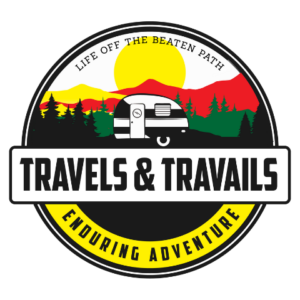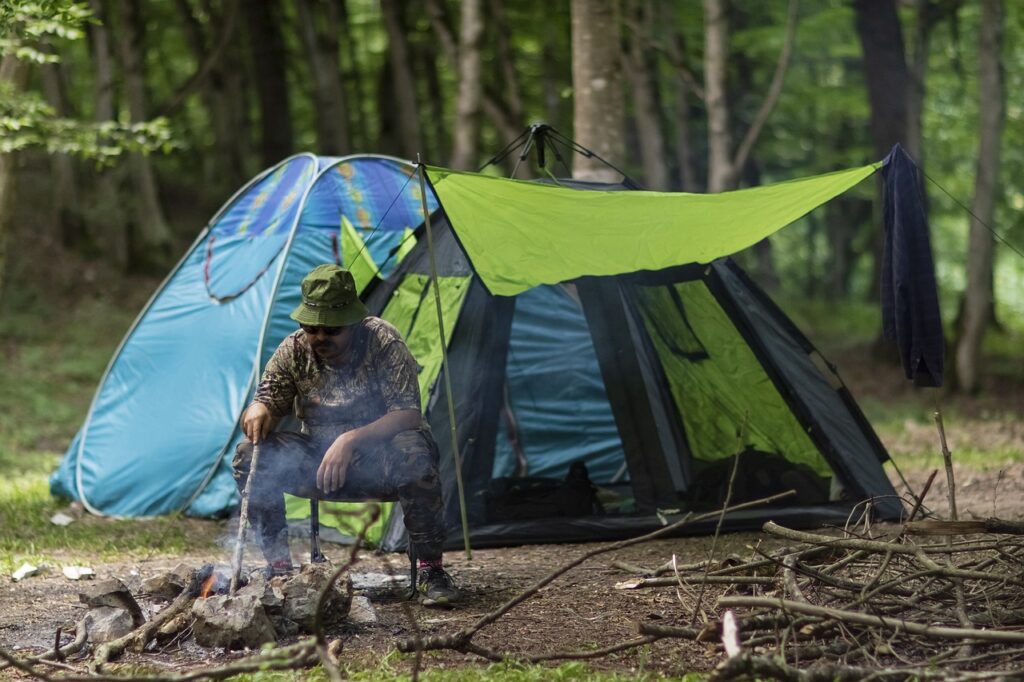
With the economy hitting record-high inflation, and recession looming around the corner, you’re probably looking for some ways to save money. Whether planning for your annual camping trip or just a weekend warrior trip, you may ask, “How can I save money while camping?”
Here are 10 tips that you can use to save money while camping:
- Camp close to home
- Stay at free/low-cost campsites
- Be “self-contained”
- Prepare your own meals
- Use what foods you have on hand
- Choose free camping activities
- Buy used or inexpensive gear
- Borrow or rent gear
- Use gear you already have
- Bring your own firewood and ice
Read on to find out more about these money-saving camping tips.
1. Camp Close to Home
Fuel costs are at record highs. One of the easiest ways to combat high fuel costs is to camp close to home. Fuel costs are one of the most expensive costs of camping.
There are usually many camping options close to home that you may not have thought of. If you’re on the West Coast, look for low-cost or free camping in your area. Campendium and the Dyrt are two good apps to find campsites close to home.
If you’re really on a tight budget, camp in the backyard. This is a great way to test out gear before you use it and kids love camping…even in the backyard.
2. Stay at free/low-cost campsites
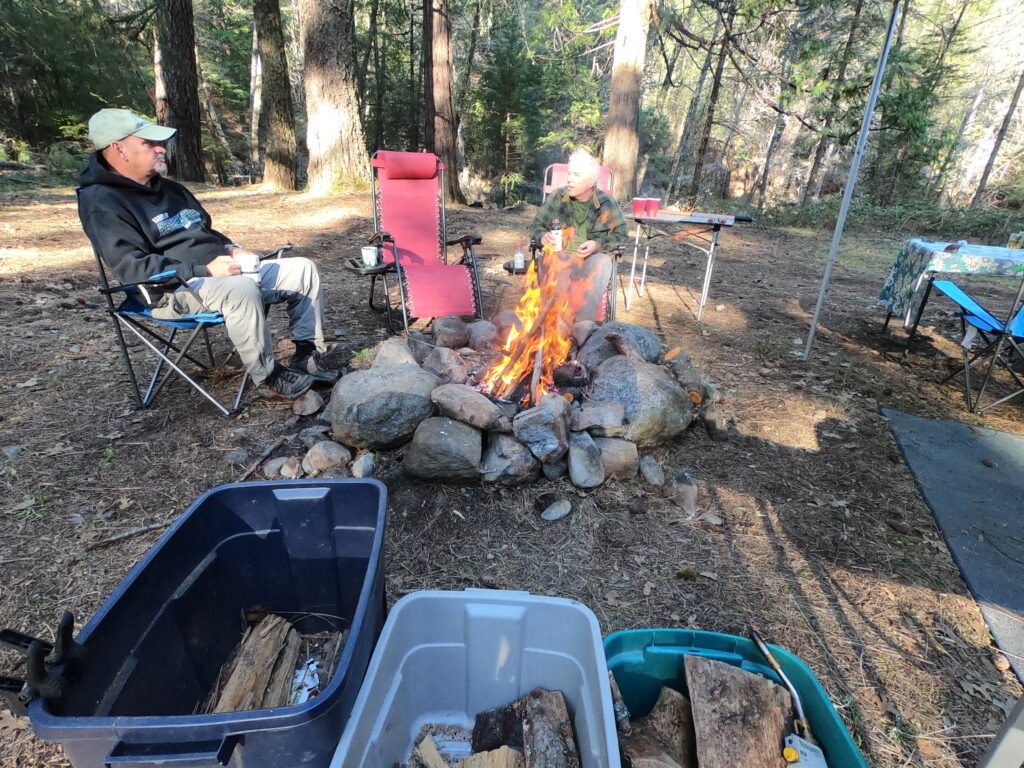
There are many free and low-cost camping options. Some Examples are as follows:
- National Forest dispersed camping (free)
- Bureau of Land Management dispersed camping (free)
- National Forest Campgrounds (starts at $12.00/night)
- National Park Campgrounds (starts at $25.00/night)
- State Park Campgrounds (price varies)
- Local or County Park Campgrounds (price varies)
- Army Corps of Engineers Campgrounds (starts at $22.00)
If you are active military or a veteran, you can also stay at military campgrounds.
If you’d like to get more information on free and low-cost campsites, read the article I wrote. If you’d like to know how to prepare for free dispersed camping, read the article that I wrote.
3. Be “Self-Contained”
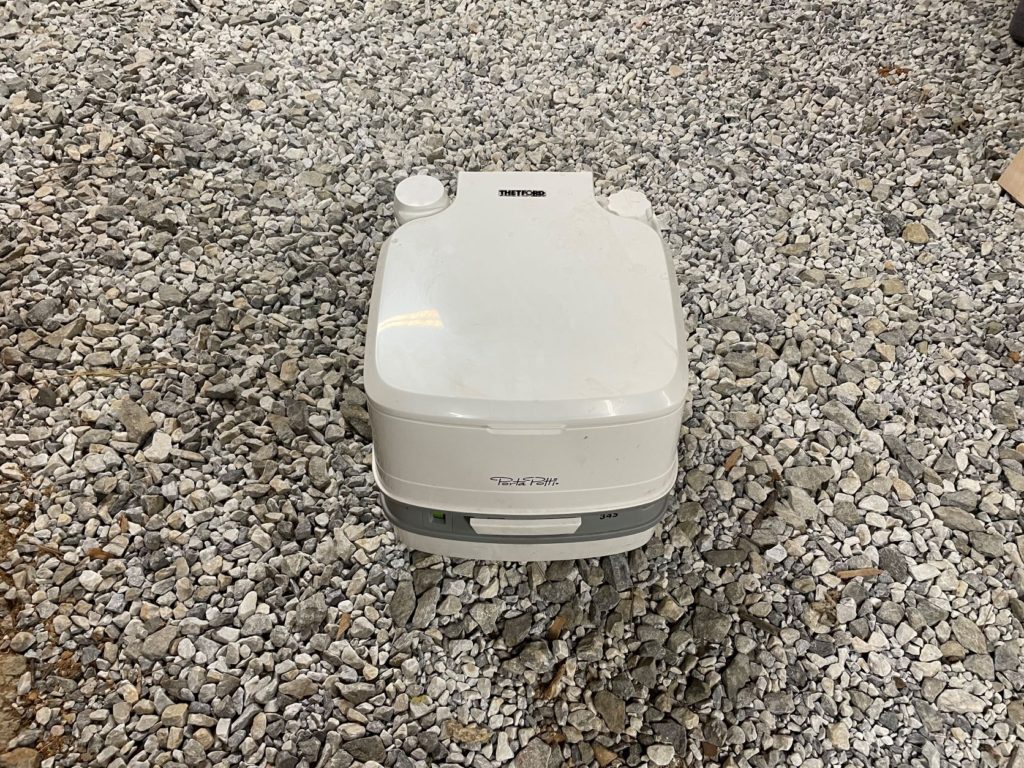
If you’re staying at free National Forest or Bureau of Land Management dispersed campsites, you’ll need to be self-contained. This means that you have either an RV with a bath and shower, or you bring your own bath and shower.
Some people dig catholes and leave their waste in the campsite. This is ok if you are backpacking (in some locations), but not acceptable if you are dispersed camping.
If everyone left their poop and their toilet paper at a campsite, pretty soon it would not be a nice place to camp.
There are many types of toilets on the market from very inexpensive (like a bucket) to pricey and somewhere in between. I wrote an article on choosing a toilet for a camper van, but it applies to any type of camping. I’ll summarize here.
There are several types of toilets that you can choose from. Let’s begin with the least expensive toilets. A simple bucket is a cheap and easy way to go to the bathroom in the woods without damaging the environment.
You can get a 5-gallon bucket at Home Depot for around $5.00. Add to that a $17.00 snap-on toilet seat and some trash bags for a liner, and you have a toilet for less than $30.00.
I recommend that you use two bags in the bucket just to be safe.
Add some absorbent material to the trash bag, and you’re ready to go. I like the horse pelleted bedding from Tractor Supply.
For $40.00, you can get this collapsable toilet that fits in a small bag. This toilet won’t break the bank and easily stores away when not in use.
We have a portable camping toilet that works for us. This toilet is foldable, compact, sets up easily, and costs under $50.00.
We also have a Porto Potty. It’s quite a bit more expensive, but it flushes like a normal toilet.
In addition to a toilet, you’ll want a privacy shelter and a shower.
We have the Pop-Up Pod. It’s inexpensive, at less than $30.00, and sets up easily. It’s a bit of a challenge to get it back in the bag, and it’s not great in heavy winds, but it works well under most conditions. It’s big enough to fit a toilet. You can also use it as a shower enclosure, you just have to remove the toilet.
You’ll also want a means to get yourself clean. There are several low-cost options for getting clean.
The simplest option is to heat water over the fire or stove and take a sponge bath. Use a biodegradable or environmental friendly soap like Campsuds or Dr. Bonners.
Another option is to use wipes. Simple baby wipes will due, but you can also purchase disposable bathing wipes. You can also get a towel-sized body wipe. These are great because they don’t require much water.
If you’re not camped near water, you’ll have to carry it into your campsite, so a shower may be a premium.
If you are camped near water, you have other options. One option is a shower pump. With these types of showers, you heat the water, put it in the bucket, and drop in the suction end of the pump.
Another low-cost option is a solar shower. My experience with the solar shower is that it won’t get the water hot, but it will warm it up.
If you’re looking for an inexpensive DIY shower, you can use a spray pump, like the kind you would use to spray weeds, to make a shower. You can also use it for washing dishes.
4. Prepare Your Own Meals
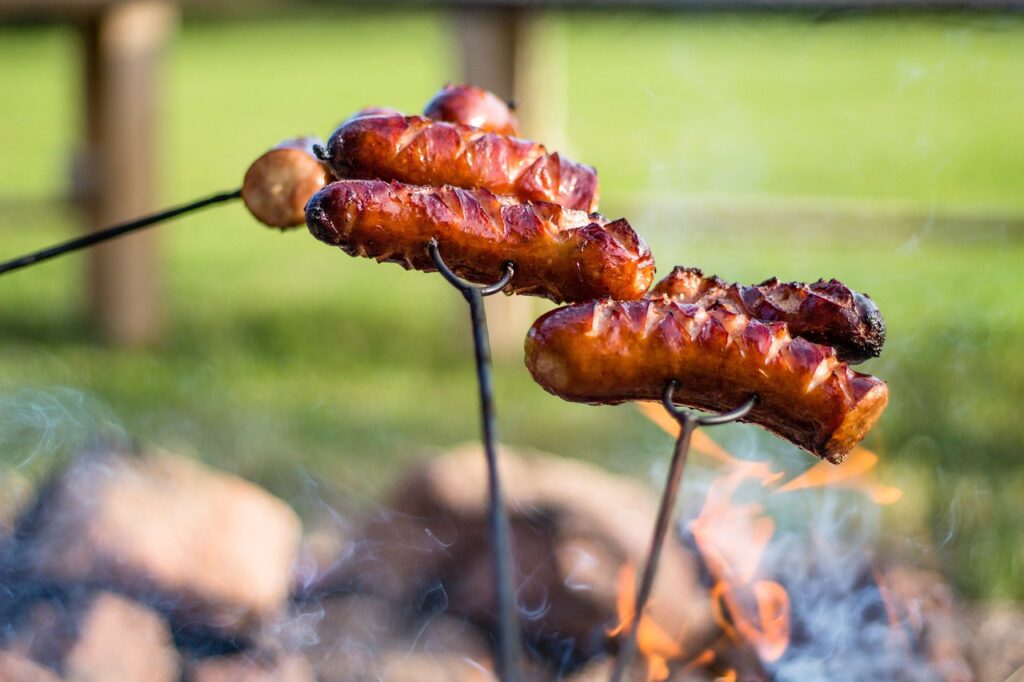
Food costs have skyrocketed, and the price of eating out is through the roof. Making food from scratch is the cheapest way to prepare food, but it’s time-consuming.
I either make food ahead at home and rewarm it at the campsite or buy prepackaged, ready-made foods.
One example would be a package of macaroni and cheese. Pair that with hot dogs and corn on the cob or a salad and you have an easy low-cost meal.
I really like the premade bags of rice or quinoa that you can buy in the store. They are already cooked – you just need to reheat them. They can be used in many different recipes and the work of cooking them is halfway done for you.
We have a Hot-Logic Mini. It’s a food re-warmer that many people use for lunch, but we use it for camping. It’s just right for two people.
If you have a family, consider getting a larger food re-warmer. Then make your meals at home and heat them at camp. Casseroles and soups re-warm well in the Hot Logic.
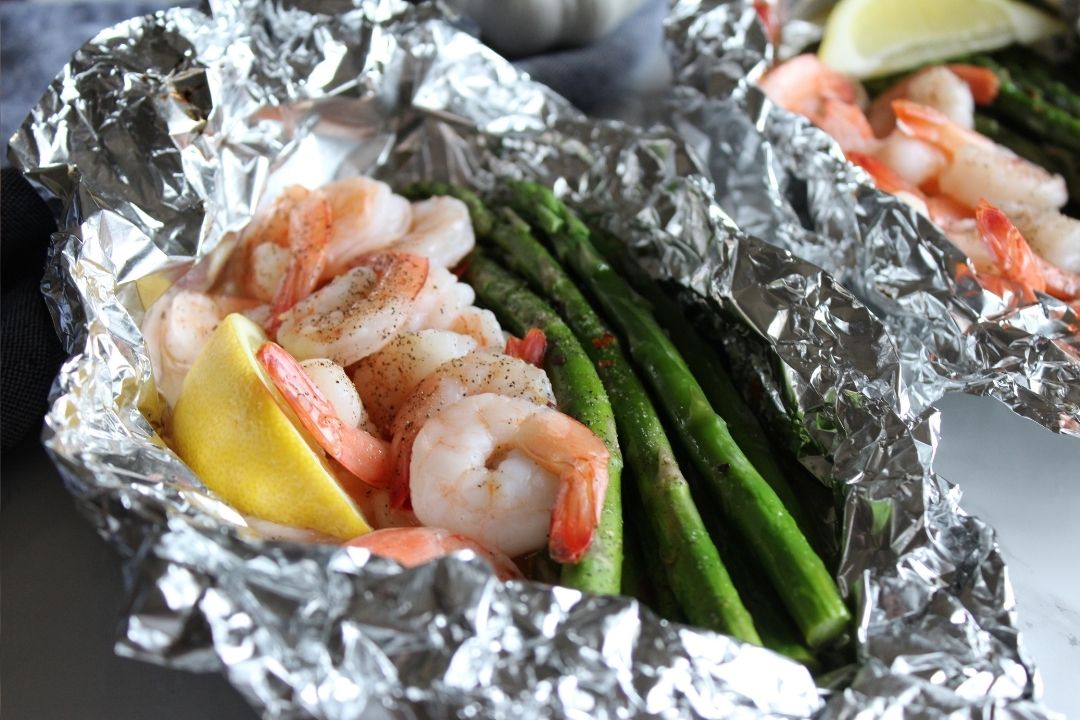
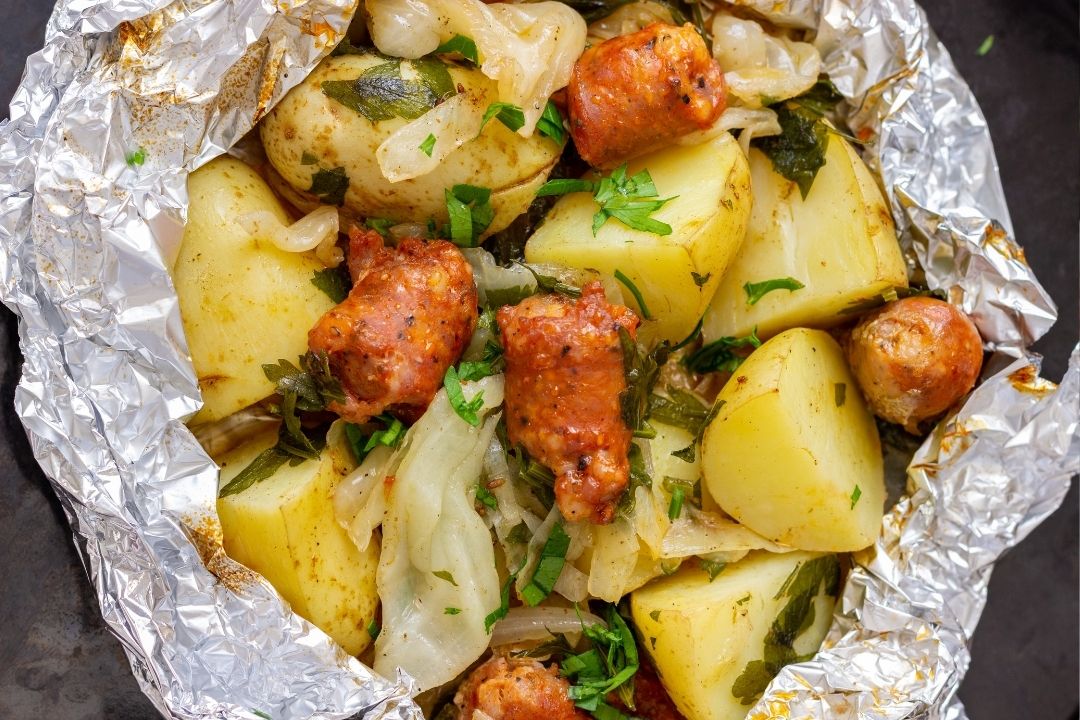
Another fun and easy way to have pre-prepared meals is to make foil-wrapped dinners. They are easy to cook and easy to clean up.
It’s a little bit of work at home, but worth the effort. Plus, there are tons of recipe ideas on the internet. You can cook them over the campfire or warm them on a grill.
I wrote an article about different types of camp cooking methods. Read it here.
If you’d like to get some ideas on camping foods that won’t break the bank, read our article here.
5. Use What Foods You Have on Hand
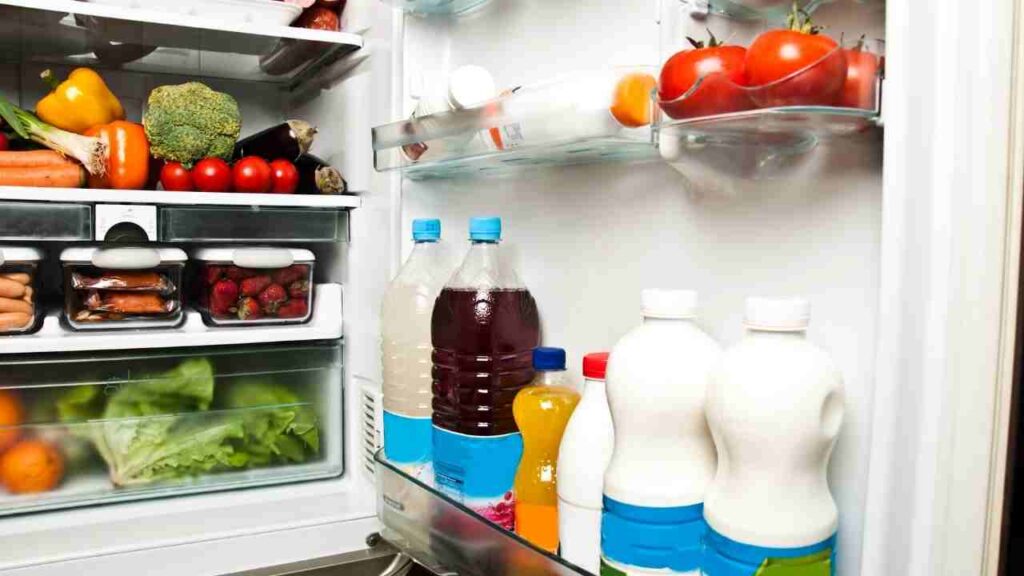
Open your refrigerator and cupboards and see what is available. There are many websites where you can enter ingredients and the site will give you recipes. One that I use is Allrecipies.
Using websites like Allrecipies will help you make tasty food with the items you already have. Even if you don’t have all the items needed for the recipe, you’ll still save money using what you have in your pantry or refrigerator.
I typed “chicken,” “potatoes,” and “foil” into the recipe finder which came back with a few recipes for foil-wrapped meals.
6. Choose Free Camping Activities
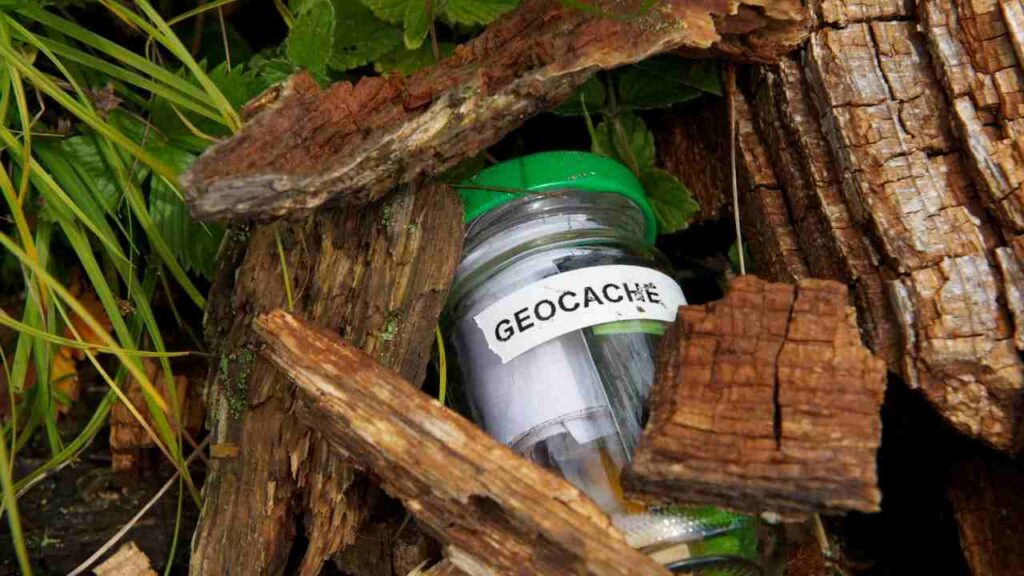
Hiking is one free activity that we really enjoy. It’s good to get some exercise and fresh air.
If hiking isn’t your bag, bring a book or games to play. Camping is all about getting off the hampster wheel and relaxing.
We have one friend who uses her camping time to read a novel, something she rarely does at home.
Another friend likes puzzles. When we aren’t hiking, she will spend her time putting a puzzle together. You can usually find a puzzle at the thrift store, often unopened.
Adults and kids both like to play games. A pack of cards is an inexpensive form of entertainment. You can use them to play games or give them to the kids to make a house of cards.
Inexpensive games can be purchased at a dollar store or thrift store.
Another fun activity is geocaching or, if you have kids, you can set up a scavenger hunt.
If you are near a town or city, go site seeing. In addition, many towns and cities have free activities. Check Google for free activities near the town or city close to your campsite.
If it’s windy, you can fly a kite. Kites are usually not too expensive and a fun way to spend an afternoon.
We really enjoy sitting by the campfire. If we are in a dark-sky area, it’s fun to stargaze. There are several apps that you can download for free that give you information about constellations.
Another fun activity for both adults and children is watching the animals. Even urban or suburban campgrounds will have birds and some will have squirrels. They are entertaining to watch.
7. Buy Used or Inexpensive Gear
REI used to have a ‘garage sale” event where they would sell their used and returned gear. We have gotten some really good buys at the REI garage sale. The event happened periodically and it was very competitive.
Nowadays, each REI store has a shelf with previously used gear at steeply discounted prices. In addition, you can shop for used gear at REI online.
Besides REI used gear, there are many Facebook groups where people sell used camping gear. If you spend some time looking, you’re bound to find a bargain.
There are also some online discount stores where you can buy gear. It’s new, but probably last year’s model or style. One online store that I have shopped at is Steep and Cheap and another is Moosejaw. Both have discounted prices.
Lastly, Walmart has bargain basement prices on camping gear. It’s not always great quality, but it will get you by.
When I was a poor single mom, I purchased sleeping bags and a camp stove from Walmart. Then I bought a tent from the REI used gear sale. We only camped a few times a year and that gear worked every time.
8. Borrow or Rent Gear
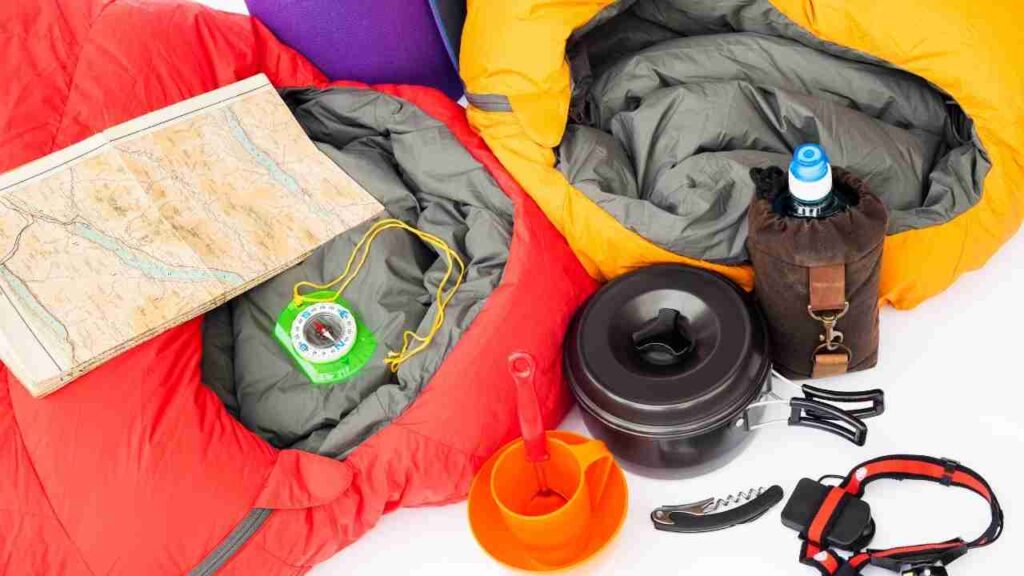
If you can’t afford to buy new gear, or you are not sure exactly what you’ll need, borrow gear. You probably have friends who camp who are willing to loan you a tent and some sleeping bags.
If you don’t know anyone who will loan you gear, rent it. Most REI stores have camping rental gear. for example, you can rent a Coleman stove, a 6-person tent, sleeping pads, and sleeping bags.
You can also rent gear, online, from Moosejaw. This is a great option if you’re trying out camping for the first time and are not sure that you want to invest the money. It’s also a great option if you want to try out a specific piece of equipment.
You order the gear online from Moosejaw and they ship it to you. When you’re done with the gear, you ship it back in the same box. Moosejaw provides a pre-printed label for the return.
9. Use Gear You Already Have
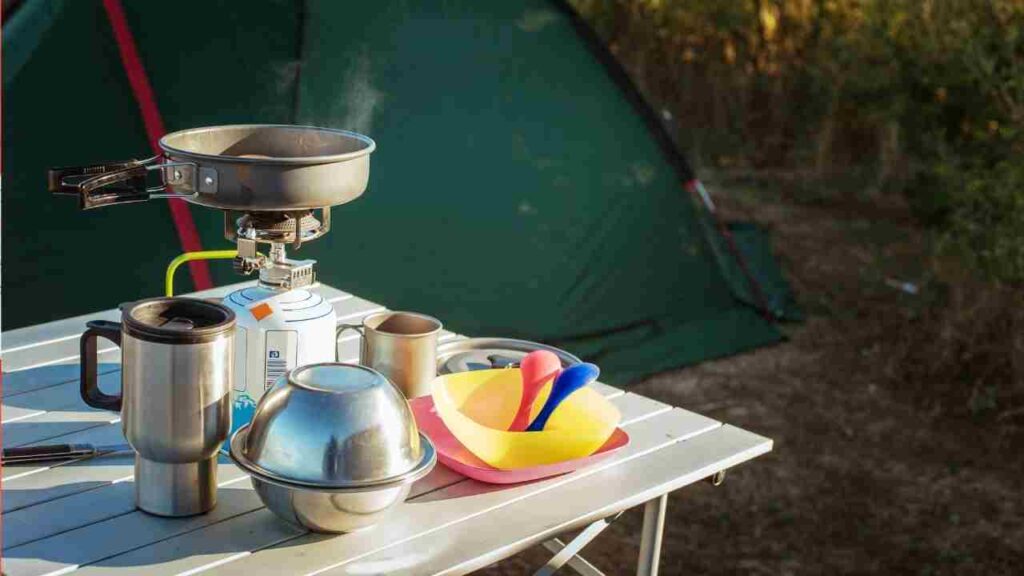
When I first outfitted our camper, I used pots and pans that we already had. We also had some plates and cutlery that we had sitting around in the basement. You can borrow many other types of kitchen items from home.
Speaking of gear, REI has a great camping checklist.
You should have all the clothing that you need at home. If you’d like to know more about what clothing to bring, read this article that we wrote. It focuses on cold-weather clothing, but the principles are the same One exception would be that maybe you need a swimsuit in the summer.
10. Bring Your Own Firewood and Ice
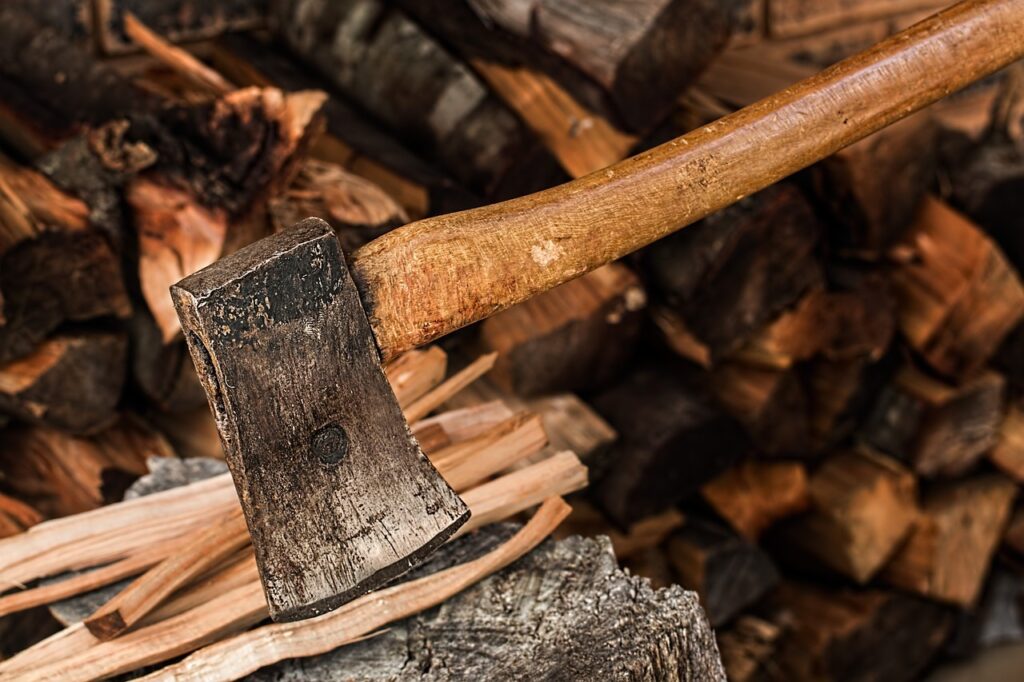
If allowed, bring your own firewood. Firewood can cost up to $15.00 for a small bundle. And you’ll save a bundle if you bring your own.
Some areas do not allow you to bring in firewood. In that case, check the local grocery store for price before you buy it at a campground.
Some dispersed camping areas allow you to collect firewood. This is a fun activity. You’ll get some exercise in the process and the firewood will be free.
Be sure to check the website for the dispersed camping area to make sure that you can collect wood.
In addition, you should always check to make sure that you can have a fire. In the West, fires are often prohibited in the summer and fall due to forest fire danger.
Ice can also be an unnecessary cost. You can freeze water jugs to keep your ice chest cool and use the water once the jug defrosts.
Additionally, you can freeze your food. Since we do a lot of make-ahead meals, we freeze them.
We also use the ice we collect out of our refrigerator’s ice make and bring that.
Conclusion
Camping is one of the few memory making events that doesn’t have to break the bank. With a little planning, you can have the trip of a lifetime with very little expense.
